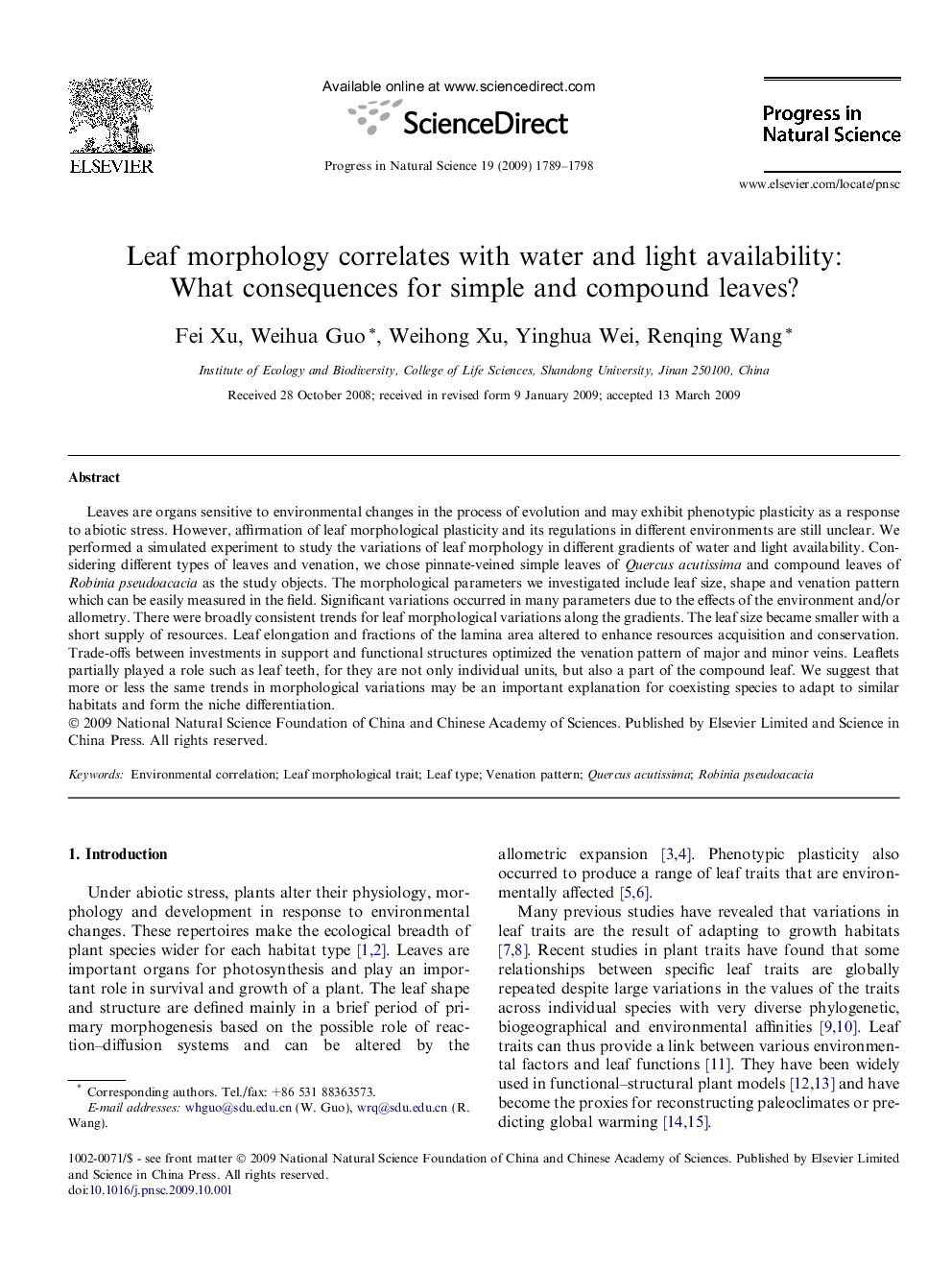| Article ID | Journal | Published Year | Pages | File Type |
|---|---|---|---|---|
| 1548585 | Progress in Natural Science: Materials International | 2009 | 10 Pages |
Leaves are organs sensitive to environmental changes in the process of evolution and may exhibit phenotypic plasticity as a response to abiotic stress. However, affirmation of leaf morphological plasticity and its regulations in different environments are still unclear. We performed a simulated experiment to study the variations of leaf morphology in different gradients of water and light availability. Considering different types of leaves and venation, we chose pinnate-veined simple leaves of Quercus acutissima and compound leaves of Robinia pseudoacacia as the study objects. The morphological parameters we investigated include leaf size, shape and venation pattern which can be easily measured in the field. Significant variations occurred in many parameters due to the effects of the environment and/or allometry. There were broadly consistent trends for leaf morphological variations along the gradients. The leaf size became smaller with a short supply of resources. Leaf elongation and fractions of the lamina area altered to enhance resources acquisition and conservation. Trade-offs between investments in support and functional structures optimized the venation pattern of major and minor veins. Leaflets partially played a role such as leaf teeth, for they are not only individual units, but also a part of the compound leaf. We suggest that more or less the same trends in morphological variations may be an important explanation for coexisting species to adapt to similar habitats and form the niche differentiation.
